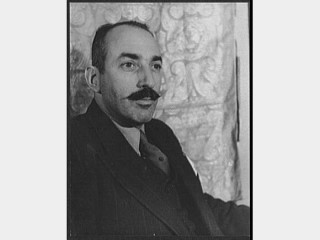
Alfred A. Knopf biography
Date of birth : 1892-09-12
Date of death : 1984-08-11
Birthplace : New York City, New York, US
Nationality : American
Category : Famous Figures
Last modified : 2010-11-20
Credited as : Writer and publisher, ,
Alfred A. Knopf, American publisher, used his commitment to fine books, his marketing skill, and his personality to create a firm of extraordinary distinction.
Alfred A. Knopf was born in New York City on September 12, 1892, to Samuel and Ida Jaffee Knopf. In 1908 he entered Columbia University, where he studied literature with John Erskine and Joel Spingarn and history with Carlton Hayes. During his senior year he began corresponding with the British novelist John Galsworthy, about whom he was writing an essay. He graduated in the spring of 1912, planning to attend Harvard Law School the following fall. That summer, however, he travelled to England, met Galsworthy, became entranced by the literary life, and decided to forego law in favor of a career in publishing.
Knopf's father, an advertising man and financial consultant, helped him to secure a position in the accounting department of Doubleday, Page at eight dollars a week. Knopf stayed at Doubleday for 18 months, in the course of which he wrote a highly effective publicity brochure about Joseph Conrad. In 1914 he left Doubleday to work for the publisher Mitchell Kennerly. The next year, equipped with $5,000, a desk in his father's office, and the assistance of his fiancee Blanche Wolf (whom he married in 1916), Knopf struck out on his own.
From the beginning Knopf books were distinctive in three respects: cosmopolitanism, quality, and design. By 1917, of the 77 books Knopf had issued, more than a quarter were English (including W. H. Hudson's Green Mansions), while continental, Russian, and Asian writers accounted for almost half. In the 1920s Knopf began acquiring such notable American authors as Willa Cather, Carl Van Vechten, and Joseph Hergesheimer. As vice-president of the firm, however, Blanche Knopf perpetuated the house's special interest in foreign books. Thus, by 1960 Knopf had published works by Andre Gide, Thomas Mann, Sigrid Undset, D. H. Lawrence, Jean-Paul Sartre, and Albert Camus, along with Americans such as Elizabeth Bowen, Dashiell Hammett, and John Hersey.
Knopf's role between 1924 and 1934 as publisher of the iconoclastic magazine The American Mercury, edited until 1933 by H. L. Mencken (another Knopf author), also testified to his cosmopolitan outlook. Moreover, the calibre of the works Knopf brought before the public was extraordinarily high. Sixteen Knopf authors—the largest number from any American publishing house—won Nobel Prizes in literature. Thanks to Knopf's special interest in history (he was a devoted member of the American Historical Association), he published such eminent scholars as R. R. Palmer, Samuel Eliot Morison, and Richard Hofstadter. The Knopf list as a whole reflected Alfred and Blanche Knopf's commitment to the finest literature of the day, irrespective of whether or not it would sell. The Knopfs' preoccupation with quality extended to the format of their books. From the richly textured paper to the colorful cover materials, to the carefully designed type, Knopf books exuded taste and painstaking workmanship.
Knopf's determination to uphold standards in the face of the commercialization of the publishing industry led him to deplore such phenomena as the rise of book clubs. Yet, in his own way, he was a master of marketing. His Borzoi colophon—the drawing of a Russian wolfhound which appeared on every Knopf book—justly became a symbol of excellence, but it also enabled Knopf to sell his product by the label alone. He was the first publisher to use photographs in testimonials, and he advertised books in spaces previously reserved for cars and cigarettes. Knopf's personality also helped to promote his books. Crusty and egotistical, he wore flamboyant shirts from the most exclusive tailors; was a connoisseur of music, food, and wine; nurtured a garden of exotic plants; and enjoyed rare cigars. His self-assured, irascible manner, together with his insistence on the best of everything, shaped his house's image as a purveyor of works of enduring value.
In 1958 the Knopfs' only child, Alfred, Jr., resigned from the firm. Born in 1918, "Pat" Knopf had entered his parents' business as heir apparent, but when they showed no signs of relinquishing their control he left to found Atheneum Publishers. In 1960 Alfred A. Knopf, Inc., was purchased by Random House, a subsidiary of RCA; both were subsequently bought by S. I. Newhouse. Blanche Knopf died in 1966. The following year Knopf married Helen N. Hedrick, a novelist. Although Knopf continued to influence the titles published under his imprint, including works by Toni Morrison, Doris Lessing, and John Updike, with advancing age he began to withdraw from the house's day-today operations.
Knopf's achievements as a publisher of distinguished books brought him half a dozen honorary degrees, as well as decorations from the Polish and Brazilian governments. In addition, his service on the advisory board of the National Parks Commission and his tireless efforts on behalf of conservation earned him numerous awards. Knopf died of congestive heart failure on August 11, 1984, at his estate in Purchase, New York.
Information about Alfred A. Knopf's publishing activities appears in Hellmut Lehmann-Haupt, The Book in America (1951); Charles Madison, Book Publishing in America (1966); and John Tebbel, A History of Book Publishing in the United States (1978, 1981). The best source on Knopf's personality as well as his career is a three-part New Yorker magazine profile by Geoffrey T. Hellman (November 20, November 27, and December 4, 1948). See also Alfred A. Knopf: Quarter Century (1940).
















